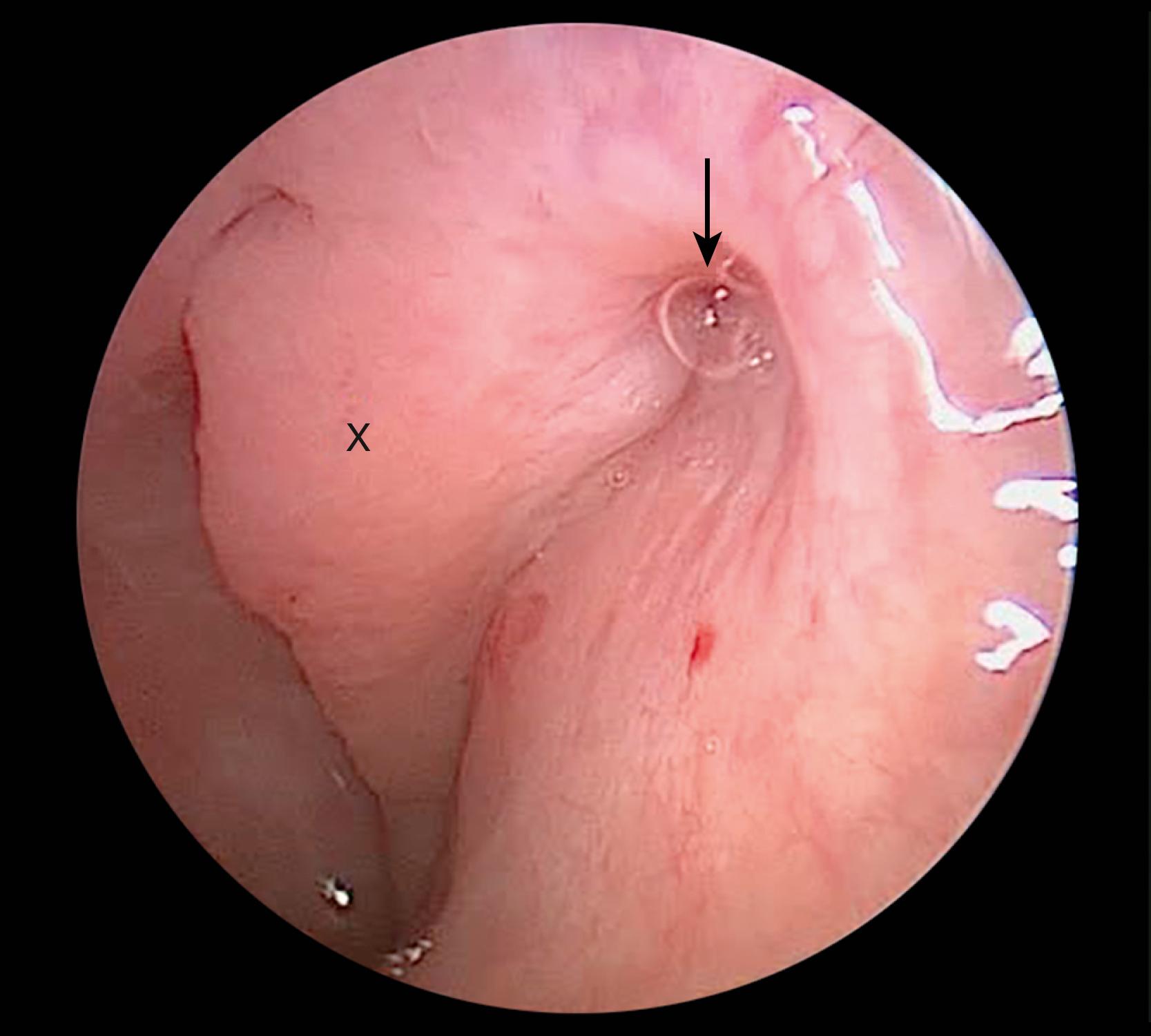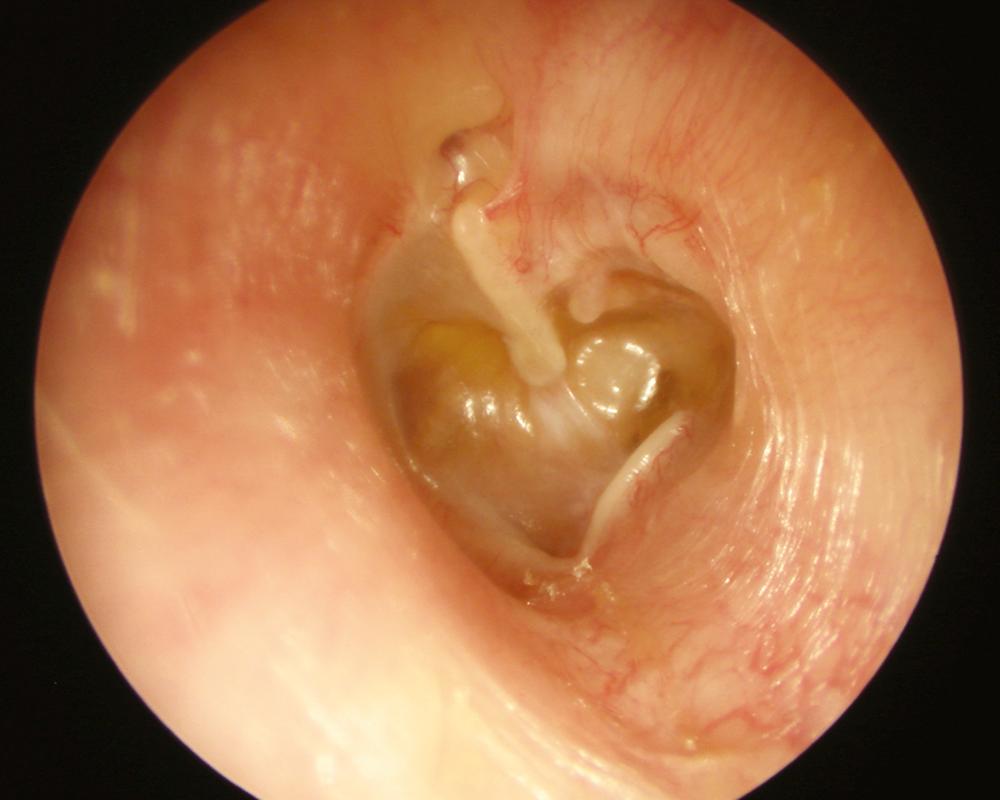Physical Address
304 North Cardinal St.
Dorchester Center, MA 02124
Acute otitis media (AOM) and chronic otitis media with effusion are conditions well known to all otolaryngologists. Infants are predisposed to otitis media because of their immune-compromised state and altered angulation of the eustachian tube (ET). Later in life, adenoid enlargement with ET obstruction may also play a role. Children with craniofacial and cleft palate disorders are also more likely to develop otitis media because of altered anatomy and physiologic function of the ET.
AOM refers to rapid onset of middle ear inflammation.
Recurrent AOM is defined as three episodes of AOM in 6 months or 4 episodes in 12 months with at least 1 episode occurring in the past 6 months.
Persistent AOM is defined as an infection that fails to resolve with proper antibiotic therapy or when two episodes of otitis media occur in 1 month.
Chronic otitis media (OM) with effusion refers to an effusion that persists longer than 3 months.
With severe chronic OM, tympanic membrane retraction and middle ear atelectasis occur.
Eosinophilic OM implies viscous eosinophilic middle ear fluid (allergic mucin).
Dysfunction of the ET can result from anatomic, physiologic, or inflammatory causes. The middle 8 to 12 mm of the cartilaginous ET serves as a valve that is collapsed at rest and opens with contraction of the tensor veli palatini muscle. Mucosal inflammation from rhinosinusitis, upper respiratory infection, laryngopharyngeal reflux, and exposure to “second-hand” smoke can prevent opening of the valve and results in poor ventilation of the middle ear.
Tympanostomy tubes are placed in the pars tensa of the tympanic membrane away from the posterior superior quadrant to avoid injury to the ossicular chain and chorda tympani nerve.
Tympanostomy tubes should be positioned for easy office evaluation.
The torus tubarius marks the nasopharyngeal opening of the ET and is posterior and slightly inferior to the posterior aspect of the inferior turbinate.
Lateralization of the inferior turbinate with a Freer elevator or serial balloon dilations can improve access of the posterior nasal cavity in narrow passageways.
The catheter in eustachian tuboplasty should not extend beyond the isthmus at the time of dilation. Dilation is focused on the valvular portion of the cartilaginous ET.
History of present illness
Presence of fever, otalgia, otorrhea, headaches, nausea and vomiting, anorexia, sleepless nights, ear tugging, subjective hearing loss, and balance disturbance
Presence of ear popping, fullness, discomfort with barometric challenge, or autophony
Duration of middle ear effusion if previously diagnosed
Number of episodes of AOM
Past medical history
Prior treatment: Previous history of antibiotic, allergy desensitization, nasal steroid, nasal antihistamine, oral antihistamine, oral steroid, or use of a topical or oral decongestant
Medical illness: Concurrent rhinitis, rhinosinusitis, adenoid hypertrophy, laryngopharyngeal reflux, craniofacial disorders, syndromes, ciliary dysfunction, granulomatous disease, tympanic membrane rupture or perforation, cholesteatoma and tympanic membrane retraction, and atelectasis
Surgery: History of previous myringotomy, tympanostomy tube placement, middle ear and mastoid surgery, or ET surgery
Family history: History of parents or siblings with tympanostomy tubes
Social history: Exposure to tobacco smoke directly or through second-hand exposure
Medications:
Antibiotics
Nasal or oral steroids
Nasal or oral antihistamines
Topical or oral decongestants
Antireflux medication
Examination may reveal a normal tympanic membrane, retraction pocket with or without cholesteatoma, severe atelectasis, or adhesive otitis media. Nasopharyngoscopy may reveal peritubal inflammation or adenoid hypertrophy ( Fig. 129.1 ).

An ideal test to measure ET function has yet to be designed. The appearance of a retracted tympanic membrane (TM) on microscopy, presence of negative middle ear pressure on tympanometry, and absence of normal ET opening during nasopharyngoscopy with the patient swallowing may suggest ET dysfunction.
Pneumatic otoscopy and otomicroscopy: This is the gold standard test for otitis media. Patients are evaluated for an opaque, bulging, or perforated TM, active otorrhea, TM atelectasis and retraction with or without cholesteatoma, and TM mobility.
Flexible endoscopy: To assess for ET mucosal hypertrophy and inflammation, adenoidal hypertrophy, sinonasal disease, laryngopharyngeal reflux, or other forms of inflammatory or granulomatous disease
Rigid endoscopy: A 30- or 45-degree rigid endoscope can be used. Evidence of hypertrophic inflamed mucosa and hyperemia along the anterior and posterior cushions, excessive mucus, or adenoidal hypertrophy impacting on the posterior cushion of the ET can be seen in patients with ET dilatory dysfunction (see Fig. 129.1 ). Videoendoscopy is helpful to differentiate obstructive disease from dynamic dysfunction. Having the patient repeat the letter “K” and swallow or yawn causes contraction of the levator veli palatini. Palatal elevation leads to medial rotation of the posterior cushion as contraction of the tensor veli palatini acts on the lateral cartilaginous lamina to open the ET. During the active phase, the resting S -shaped lumen opens to a more rounded patent one.
Conductive hearing loss can result from chronic effusion or ossicular chain erosion from chronic atelectasis.
A type B or C curve may be seen in chronic or recurrent middle ear disease.
A computed tomography (CT) scan of the temporal bone is recommended when cholesteatoma, granulation, acute mastoiditis, tumors, tegmen defect, encephalocele, or vascular anomalies are suspected.
CT scan of the temporal bone is recommended prior to balloon eustachian tuboplasty (BET) to rule out anatomic abnormalities of the skull base especially dehiscence of the carotid artery encroaching on the tubal lumen. Sinonasal disease should also be evaluated.
Obtain cultures in patients with AOM accompanied by high fever and sepsis and in patients with complications of OM. Tube insertion is recommended.
Pain and pressure relief of AOM (not commonly performed)
Tympanostomy tube insertion is the most common ambulatory surgery performed in children in the United States. This procedure helps to improve middle ear ventilation and can help patients with poorly functioning ETs.
Common indications include persistent otitis media with effusion resulting in hearing loss, recurrent otitis media, or persistent otitis media that fails to resolve with conservative treatment. Based on guidelines by the American Academy of Otolaryngology-Head and Neck Surgery, tympanostomy tubes are recommended in children aged 6 months to 12 years, with bilateral otitis media with effusion for 3 months or longer with documented hearing loss, and in children with recurrent AOM with effusion on one or both sides. The guidelines also recommend treating at-risk children with baseline sensory, physical, cognitive, or behavioral problems with otitis media with effusion and recurrent AOM. The guidelines do not address treatment of patients with retracted TMs, complications of otitis media, or barotrauma.
Indications for tube placement:
AOM that fails to resolve with antibiotic therapy
Recurrent AOM with presence of effusion and children with high fevers and discomfort regardless of clinical examination
AOM with complications such as coalescent mastoiditis, meningitis, intracranial abscess, sigmoid sinus thrombosis, and facial nerve paresis. Mastoidectomy may also be needed.
Chronic OM with effusion and documented hearing loss for 3 months or longer
Chronic OM with adherent or nonadherent TM atelectasis, ossicular chain erosion, and TM retraction with or without cholesteatoma
Eosinophilic otitis media: For ventilation and topical steroid treatment
ET dysfunction with aural fullness, ear popping, and otalgia not responding to conservative therapy
ET dysfunction with otalgia and hearing loss with barometric challenge as with air travel or hyperbaric oxygen therapy
Chronic and persistent otitis media with effusion (OME)
Nonadherent TM atelectasis
Symptomatic ET dilatory dysfunction including conductive hearing loss, otalgia, and aural fullness with pressure change
Symptomatic patients with type B or C tympanograms
Flight and scuba diving baro-challenge
Past demonstration of symptom improvement with tube placement
In patients with adherent atelectasis, progression of disease can lead to ossicular chain erosion with type II or III tympanoplasty ( Fig. 129.2 ) and in severe cases, cholesteatoma. Tube placement may not be possible and BET may not restore middle ear aeration. Tympanoplasty with tube placement (with consideration for BET) may help restore middle ear ventilation, arrest progression, and improve ET function. Observation alone is also an option in some patients.

Cerebrospinal fluid (CSF): If clear fluid is encountered during myringotomy, the tympanostomy tube should not be placed.
Vascular anomaly: If a high-riding jugular bulb or aberrant carotid artery is suspected, great caution should be exercised and CT imaging obtained.
Anesthesia contraindications
Dehiscent carotid artery in the osseous ET canal
Anesthesia contraindications
Audiogram and tympanogram
Become a Clinical Tree membership for Full access and enjoy Unlimited articles
If you are a member. Log in here